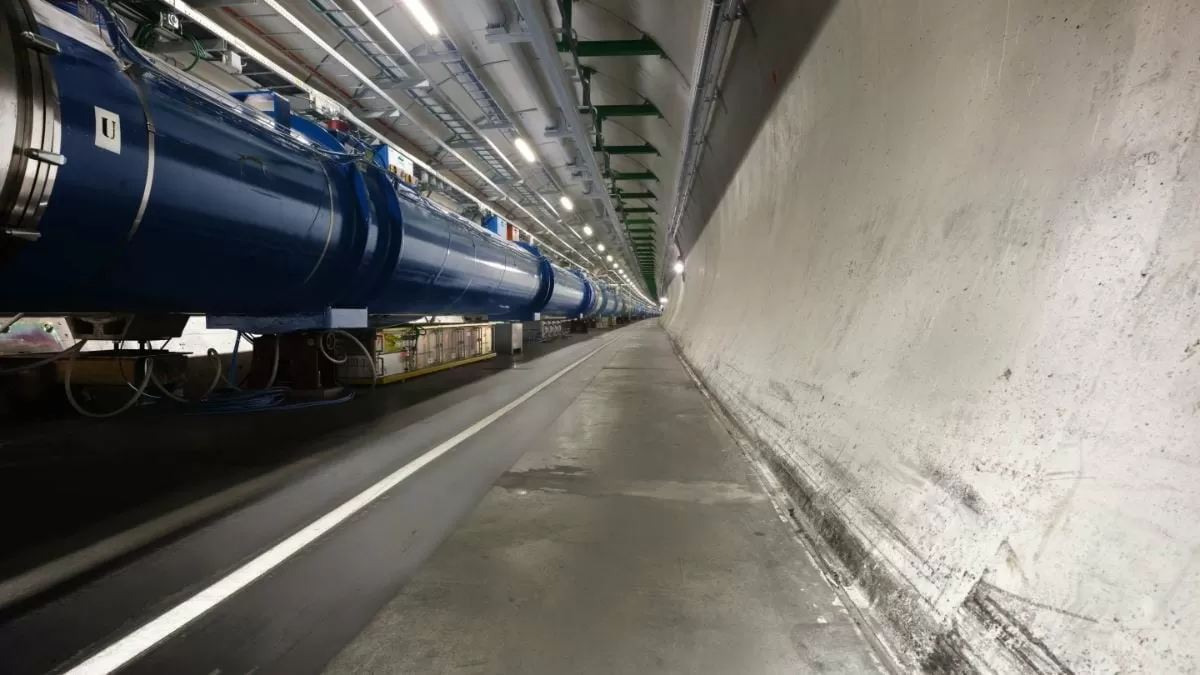The Large Hadron Collider beauty (LHCb) experiment at the European Organization for Nuclear Research (CERN) has made a groundbreaking discovery that sheds light on one of the biggest mysteries in the universe – the matter-antimatter imbalance. In a recent report, the LHCb collaboration announced the first-ever observation of CP violation in baryons, with a decay asymmetry of 2.45%. This result, with a statistical significance of 5.2σ, not only confirms fundamental physics theories but also opens up new avenues for further exploration of the matter-antimatter asymmetry that shaped our universe.
CP violation, or charge-parity violation, is a phenomenon in particle physics where there is a difference in the behavior of particles and their antiparticles. This violation of the fundamental symmetry between matter and antimatter is crucial in understanding why the universe is predominantly made up of matter. According to the Big Bang theory, equal amounts of matter and antimatter should have been created in the early universe. However, this is not the case as we see a universe dominated by matter. This has been a long-standing puzzle in physics, and the LHCb experiment has taken a significant step towards unraveling this mystery.
The LHCb experiment, one of the four main experiments at the Large Hadron Collider, is specifically designed to study the beauty (b) quark, one of the six types of quarks that make up the building blocks of matter. The experiment studies the decays of particles containing the b quark, which can provide valuable insights into the matter-antimatter asymmetry. In this latest study, the LHCb team analyzed data from proton-proton collisions at the LHC, looking for differences in the decays of two types of baryons – particles made up of three quarks.
The team found a 2.45% difference in the decay rates of the two baryons, known as Lambda-b and anti-Lambda-b, which is a clear indication of CP violation. This result has a statistical significance of 5.2σ, which is well above the threshold of 5σ required to claim a discovery in particle physics. This means that there is only a 0.00006% chance that this result is due to a random fluctuation in the data.
The observation of CP violation in baryons has been predicted by the Standard Model of particle physics, the most successful theory that describes the fundamental particles and their interactions. However, this is the first time it has been directly observed in baryons. This is a significant achievement for the LHCb experiment and the entire particle physics community as it confirms the predictions of the Standard Model.
But the implications of this result go beyond just confirming the Standard Model. It also opens up new possibilities for exploring the matter-antimatter imbalance in the universe. The LHCb collaboration is now planning to conduct more precise measurements to understand the extent of this CP violation in baryons. They will also investigate other particles and their decays to see if similar CP violation is present. This could provide crucial information on the origin of this asymmetry and help us understand why the universe is made up of matter.
The LHCb experiment has been at the forefront of several groundbreaking discoveries in particle physics, and this latest result adds to its impressive list of achievements. The collaboration has worked tirelessly over the years, analyzing vast amounts of data and pushing the boundaries of technology to make this discovery possible. The LHCb team is composed of over 1,500 scientists from 78 institutions in 15 countries, making it a truly international effort.
The discovery of CP violation in baryons is a significant milestone in our quest to understand the fundamental laws of the universe. It not only confirms the predictions of the Standard Model but also offers a new window of opportunity to explore the matter-antimatter imbalance that has puzzled scientists for decades. The LHCb experiment at CERN continues to push the boundaries of our knowledge, and we can only imagine what other groundbreaking discoveries it has in store for us in the future.

